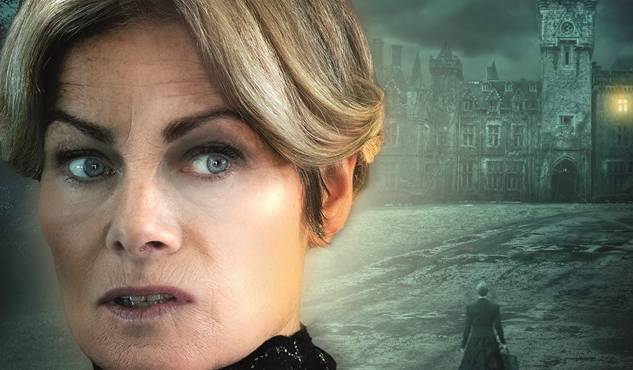
This is a tale that has been retold many times, through film (most famously, The Innocents), opera (by Benjamin Britten), ballet and many TV and radio adaptations. It has also been staged in the past and now, Tim Luscombe has adapted it for today’s audiences. Based on the Henry James 1898 novella, this version travels back and forth between an adult Flora confronting her former governess, to thirty years previously (1840) when The Governess went to look after the orphaned Flora and Miles in a large, isolated country house in Bly. Flora, having tracked down her former tutor, wants to know the truth about what really happened back then.
We are met with a set surrounded by a slanted, off -kilter series of frames suggesting sinking and subsidence – a brilliant design from Sara Perks. Perhaps this is a visual metaphor for The Governess’s state of mind – it certainly creates an uneasy, unsettling atmosphere. There is also a wonderful soundtrack (composed by John Chambers) of mainly piano music, sometimes discordant, sometimes music box- like to evoke the sounds of children playing. It is a little unsubtle at times, crashing in for shock effect but this is a ghost story after all and I relished these good old- fashioned scares.
Tension is built through the setting, the music and the effective lighting (David W Kidd). where visions materialize and blackouts suddenly occur, but somehow it dissolves during lengthy conversations with language that possibly comes directly from the novella. Perhaps the adaption could have sacrificed authenticity for more dramatic flow and more audience engagement. Janet Dibley as The Governess (she doesn’t have a name), cuts a tall, impressive presence but was not quite able to command the stage in a totally believable way. Maggie McCarthy as Mrs Grose the housekeeper, suitably plays the part of the naive servant. Elliot Burton plays all the male parts, and is physically effective as the demonic Peter Quint, but less convincing as the boy, Miles. Amy Dunn as Flora manages to transform from older to younger Flora effortlessly and gives a solid performance.
The Turn of the Screw was the original inspiration for Susan Hill’s novel, The Woman in Black, which has become an immensely successful play, showing in the West End and touring for the last thirty years. There are many echoes here, in terms of frights, a woman in black and even the famous rocking, empty rocking chair. However, though probably unfair to compare, it doesn’t quite create the same impact as that iconic production which lovers of theatrical ghost stories will be familiar with. The flyer states that this contains scenes of mild peril. You have been warned! ★★★☆☆ Karin André 12th June 2019

